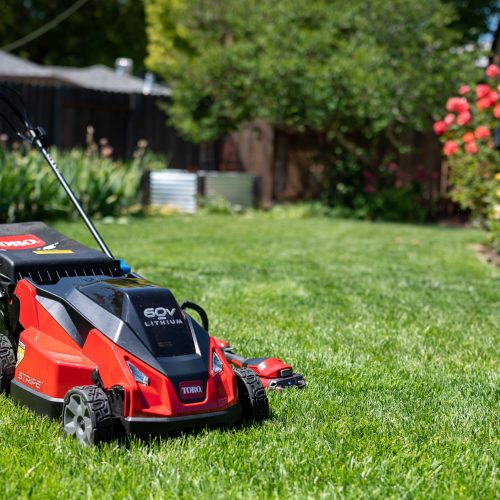Stop worrying about the buzzing and enjoy your home and yard with these proven methods on how to keep bees away. Included are effective, eco-friendly methods to maintain a bee-free environment around your home, ensuring that you can enjoy your yard on your terms. These are the best practices for keeping bees at bay while protecting our essential pollinators.

Whatever your reason is for wanting to keep bees away from you, there is no judgement here! Well, as long as you aren’t keeping them away in a destructive manner. Whether its an allergic reaction, fear, or something else, these methods will keep the bees at bay.
Although they are incredibly beneficial pollinators, too many bees buzzing about your yard can quickly ruin a spring or summer day outside. A fun pool party, backyard BBQ, and even simply mowing your lawn can either attract or aggravate the stinging insects.
Mid-March to late June is the time when bees typically swarm and fly off, looking to start new colonies. This is the time when you should be weary of bees moving into potential nesting spots or empty hives around your house. Bees will certainly be attracted to your yard if they find water or nectar sources.
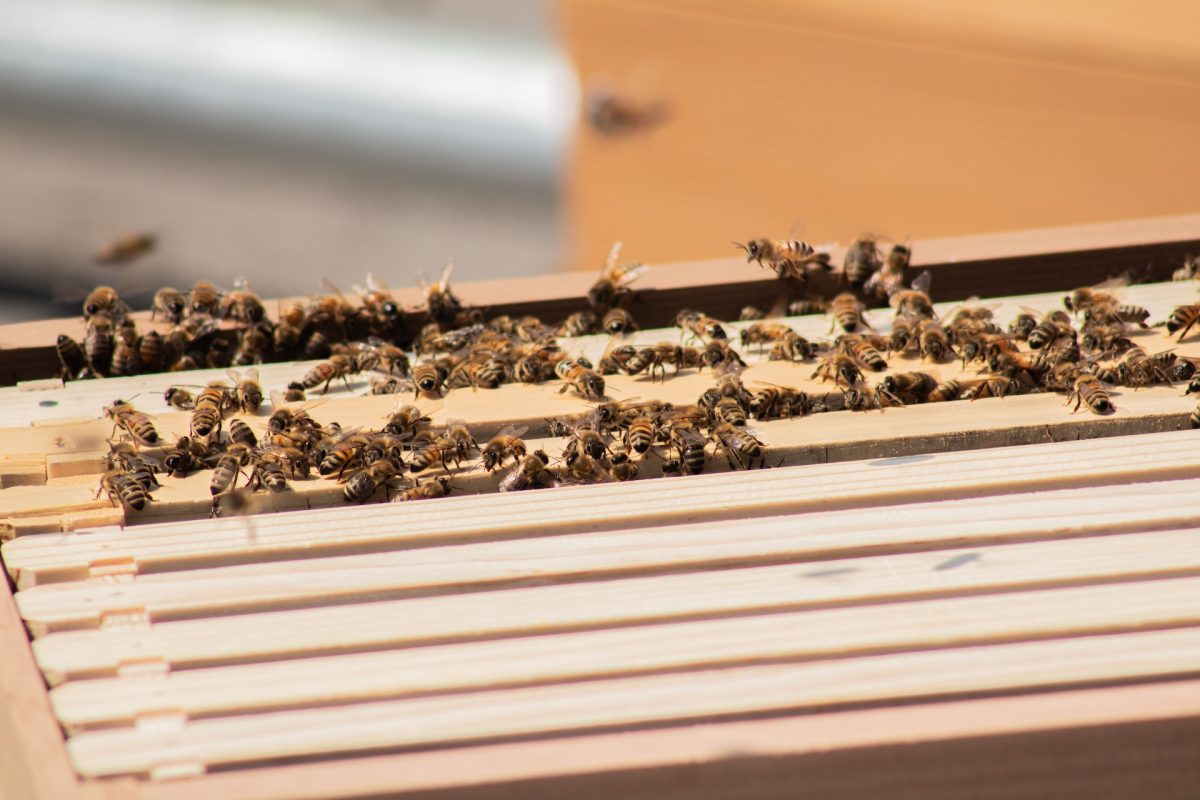
Whether you are trying to rid your yard of honey bees, carpenter bees or wasps, I’ve aggregated the most effective and simple solutions to keep your backyard bee-free.
Table of Contents
Choose plants and flowers that bees find unattractive
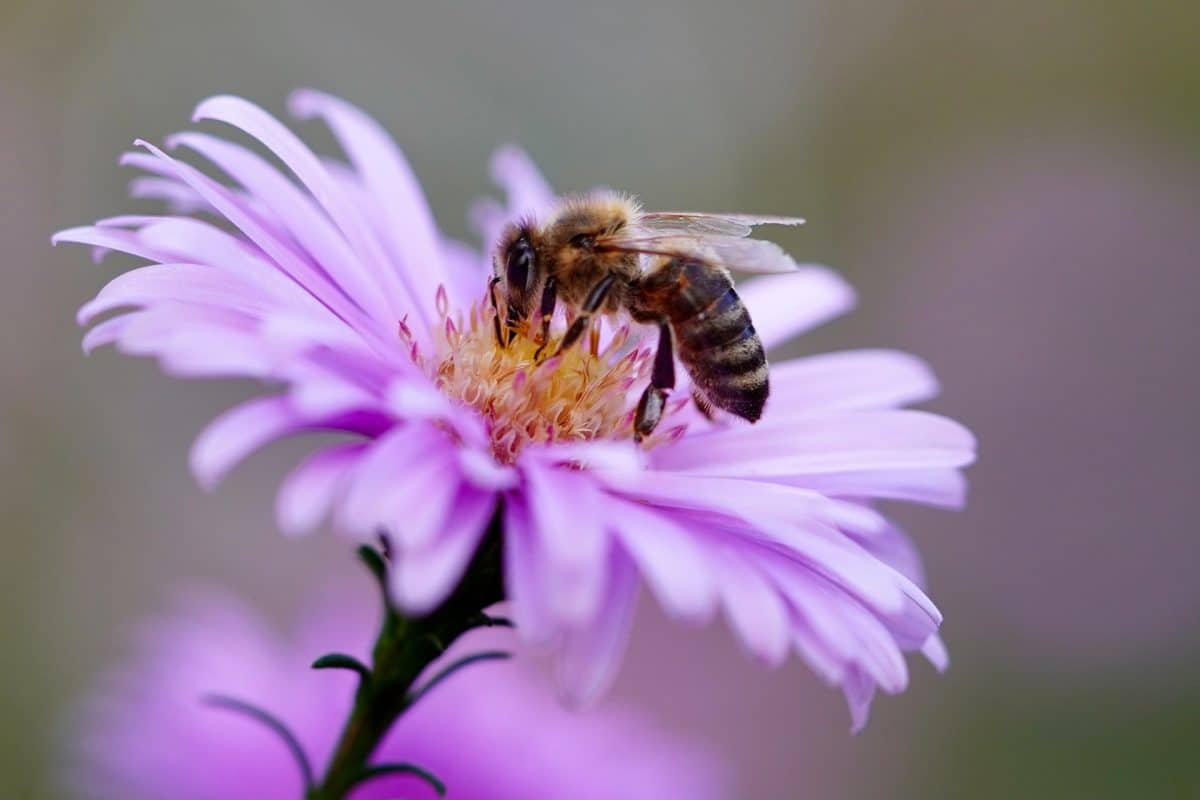
There are certain flowers that deter bees due to their oils and odors, but still add color to your yard. Some of these include geraniums, roses, dahlias, yews, and bougainvillea. Other plants that actively repel bees with their essential oils include peppermint, rosemary, feverfew, spearmint, eucalyptus, garlic, and thyme. Lucky for us, these plants happen to produce some beautiful indoor aromatics.
I have a whole article on Plant That Don’t Attract Bees you may also want to browse through for garden inspiration.
Avoid flowery and sugary fragrances.
Bees are attracted to those sweet and flowery fragrances that tend to be pushed to the front of the aisles during the spring and summer months. Consider applying the unscented versions of your favorite sunscreens, lotions and hairsprays before heading outside. Another way to use scents to your advantage outdoors is by applying small amounts of the essential oils mentioned above to outdoor furniture, or by strategically placing dryer sheets around the yard.
Keep all food and drinks covered.
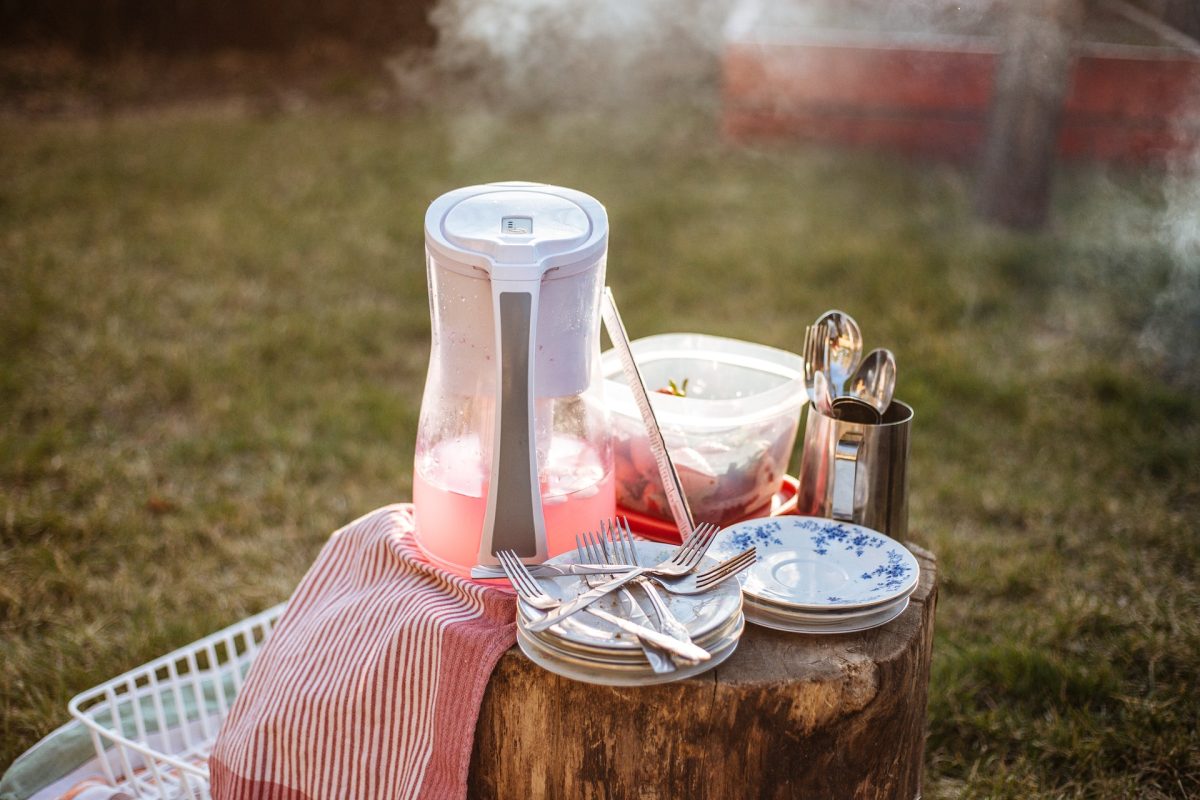
Not only does the smell of food and sweet beverages attract bees and wasps, but leaving food uncovered outside also significantly increases the chances of you or someone else getting stung. Cover soda cans and any other small crevices that wasps can crawl into, and move food back indoors as soon as possible.
Avoid wearing certain colors.
There are certain colors that they seek out more than others. Avoid wearing the colors purple, violet and blue. Red and black are safe colors to wear around bees because they cannot perceive the color red.
Look for nests around your home.
Inspect your trees for either occupied or unoccupied hives. Also check around your house for nooks and crannies that may act as nests to wasps or wood bees. These may include holes in wood fences, under decks, or around your roof overhang. If you find an active nest, do not attempt to destroy or move it yourself. It’s always a good idea to call a bee removal specialist.
Keeping in mind that Colony Collapse Disorder is decimating honey bee populations and hurting the agricultural industry, it’s more eco-friendly to relocate hives instead of taking out whole hives.
Keep bees away from your pool.
Provide an alternate source of water at the edge of your yard, such as a bird bath or water fountain. Bees will avoid turbulent water, so when using your pool, try turning on your jets. Bees will fly far from their hive to seek out water sources, especially in regions that are experiencing a drought.
Simple Eco-Friendly Bee Deterrents:
Garlic Solutions:
Garlic is great for so many things, but a lesser known use for this ubiquitous herb is as an effective bee and insect deterrent. Mix some garlic paste with some sugar water in a jar or shallow container. Place the sticky solution near an unwanted hive or anywhere often frequented by the bees. This is an excellent eco-friendly and non-toxic way to deal with a bee problem.
Cucumber Peels:
Not only are cucumbers a healthy and refreshing summer vegetable, their peels also happen to be useful wasp, bee and ant repellents. The acidity of the peels drives the insects away. Spread some cucumber peels around the perimeter of your yard or wherever people tend to gather. A friend of mine, Lisa Meadows, found this method particularly useful during summer events, noting significant results.
How to Keep Bees Away From Hummingbird Feeders
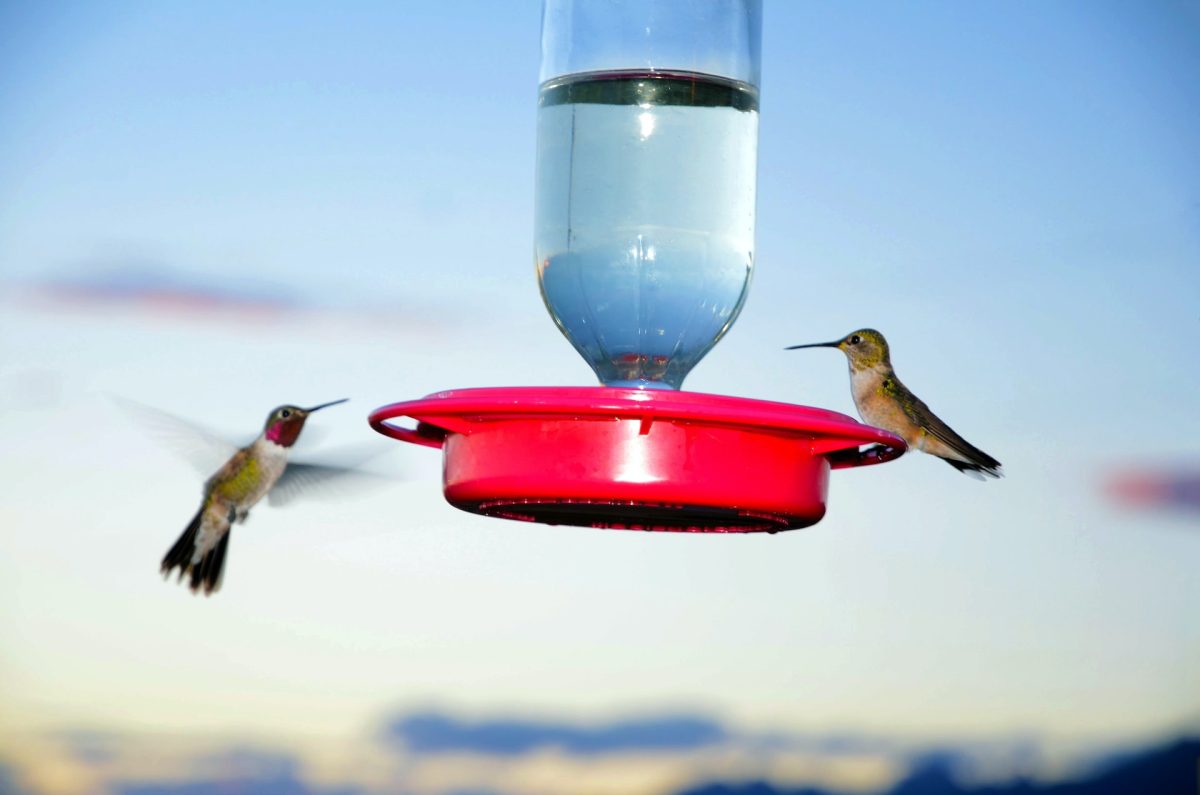
Because bees seek out the same sweet food source that hummingbirds do, they will often show up to hummingbird feeders if it is the best food or water option in the area.
Wasps in particular can become a nuisance to not only people around, but also to the hummingbirds trying to visit the feeder. If you notice this becoming an issue, try switching to saucer-style feeders, which are built for long hummingbird tongues but hard for insects to access.
Another method is installing bee guards, small inserts or attachments that create enough of a barrier that insect tongues can’t reach the sugar water.
Hummingbirds prefer a nectar concentration of about 25% sugar to water, while bees typically prefer a higher concentration. Try reducing the sugar concentration slightly to see if it makes your feeder less attractive to bees without deterring hummingbirds.
Choose hummingbird feeders with bee guards. Bee guards are small plastic or wire mesh barriers that cover the feeding ports, making it difficult for bees to access the nectar while still allowing hummingbirds to feed. These are usually the feeders that have those flower designs on them.
Keep the feeder clean. Ensure the hummingbird feeder is clean and free of any spilled nectar. Bees and other insects are more likely to be attracted to feeders with spilled or dripping nectar.
Bees are more attracted to feeders in direct sunlight. If possible, place the hummingbird feeder in a shaded area to make it less appealing to bees.
Combine the tips by what makes the most sense for your yard and you should have a great amount of success in keeping the bees away from your hummingbird feeders.
How to Keep Carpenter Bees Away
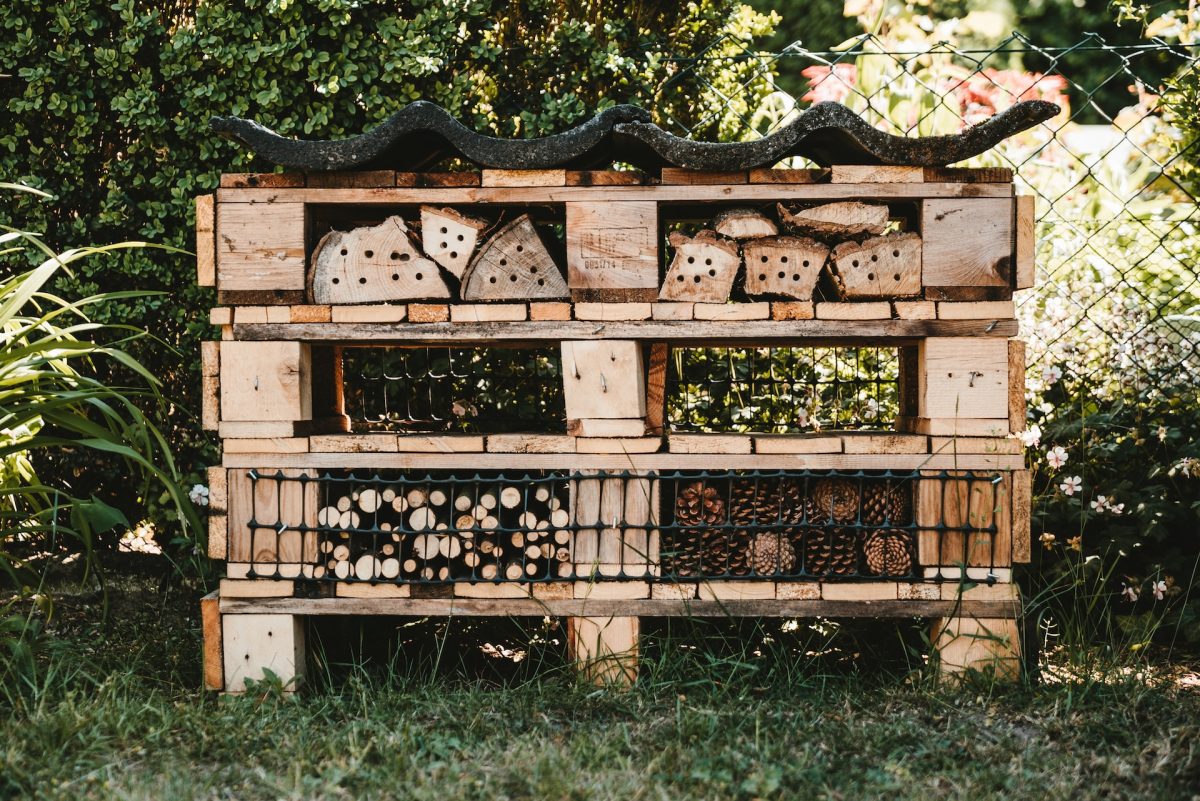
Fill any holes or gaps in wood structures.
Carpenter bees will gladly move into any nooks or crannies in wood surfaces around your yard. Female bees will continue to chew the wood to make a suitable nest. Fill any unoccupied holes or cracks with steel wool or caulk. If holes are occupied by a bee or larvae, wait until the new bees have emerged before filling the tunnels so woodpeckers don’t seek them out and cause more damage. Once you’ve filled the holes and cracks, paint or varnish over the surface. Carpenter bees are less likely to nest in painted, varnished or pressure-treated wood.
Provide alternative nesting sites.
Carpenter bees have evolved to burrow into wood to nest, so you may try enticing them away from your existing structures by placing scrap wood blocks around your yard. You can also buy premade bee homes with tubes that they may also find enticing.
Utilize natural bee repellents.
Create a diluted solution of water and almond or citrus oil, both natural bee repellents. Spray this mixture on any potential nesting sites throughout the spring, or dab some oil directly on current nests. Female bees prefer nesting in softwood, so if you are building or re-building any structures in your yard, make sure to use a varnished or painted hardwood. Another somewhat-surprising natural bee repellent is actually the noise and vibrations caused by wind chimes. Try hanging a wind chime anywhere you don’t want carpenter bees moving in.
- About the Author
- Latest Posts
I strive to paint vivid landscapes with my words, bringing the magic of far-off lands and enchanting aromas to life for my readers. Combine passion for exploration and the art of gastronomy in an unending ode to the senses. When I’m not traversing the globe, I find solace in the earth beneath my fingertips, tending to my garden and working on projects around my verdant oasis. MK Library serves as a beacon, guiding fellow travelers and homebodies alike to embrace sustainability, nurturing both our planet and our souls with purpose. Full Bio.



